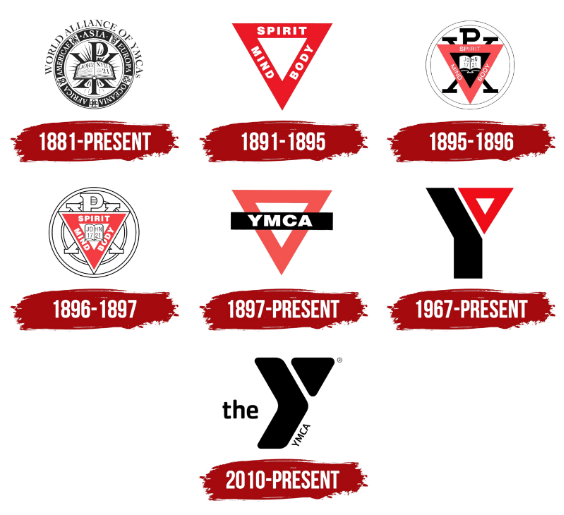"We are not the makers of history. We are made by history."
-Martin Luther King Jr.
Beginnings in London
The Young Men's Christian Association was founded in London, England, on June 6, 1844, in response to unhealthy social conditions arising in the big cities at the end of the Industrial Revolution (roughly 1750 to 1850). The growth of the railroads and centralization of commerce and industry brought many rural young men who needed jobs into cities like London. They worked 10 to 12 hours a day, six days a week. Far from home and family, these young men often lived at the workplace. They slept crowded into rooms over the company's shop, a location thought to be safer than London's tenements and streets. Outside the shop things were bad—open sewers, pickpockets, thugs, beggars, drunks, lovers for hire, and abandoned children running wild by the thousands.
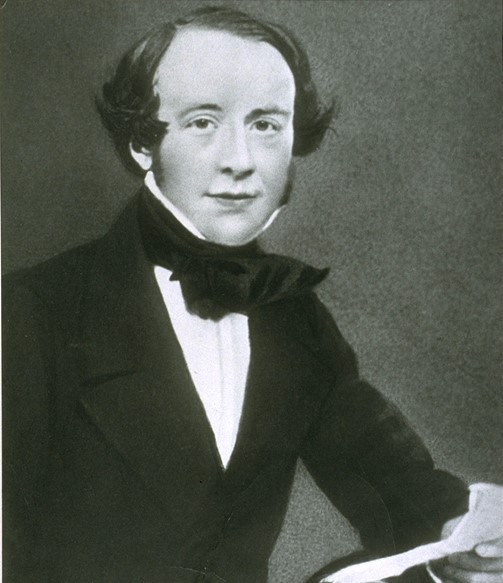
Who Was George Williams?
George Williams, born on a farm in 1821, came to London 20 years later as a sales assistant in a drapers shop, a forerunner of todays department store. He and a group of fellow drapers organized the first YMCA to substitute Bible study and prayer for life on the streets. By 1851 there were 24 YMCAs in Great Britain, with a combined membership of 2,700. That same year the Y arrived in North America, first in Montreal and then Boston.
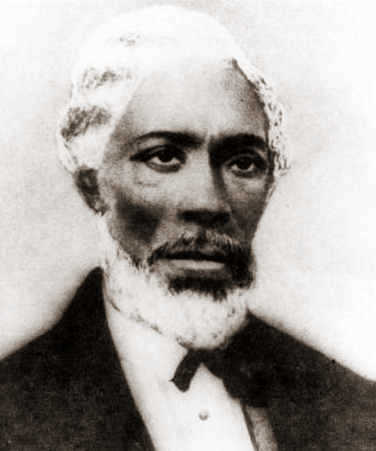
Who Was Anthony Bowen?
Former slave, who had purchased his own freedom, Anthony Bowen founded a black YMCA in Washington D.C. in 1853. It was the first nonchurch black institution in America at that time. By 1896, there were 60 active Ys for Black Americans, and by 1924, membership grew to 28,000 members across 160 Ys for Black Americans.
The Movement in North America
By 1851 there were 24 YMCAs in Great Britain, with a combined membership of 2,700. That same year the Y arrived in North America, first in Montreal and then in Boston.
The idea proved popular everywhere. In 1853, the first YMCA for African Americans was founded in Washington, D.C., by Anthony Bowen, a freed slave. The next year the first international convention was held in Paris. At the time there were 397 separate YMCAs in seven nations, with 30,369 members total.
The YMCA idea, which began among evangelicals, was unusual because it crossed the rigid lines that separated all the different churches and social classes in England in those days. This openness was a trait that would lead eventually to including in YMCAs all men, women, and children, regardless of race, religion, or nationality. Also, its target of meeting social needs in the community was dear from the start. George Williams was knighted by Queen Victoria in 1894 for his YMCA work and buried in 1905 under the floor of St. Paul’s Cathedral among that nation’s heroes and statesmen. A large stained glass window in Westminster Abbey, complete with a red triangle, is dedicated to YMCAs, to Sir George, and to Y's work during the First World War.
Civil War Times
In the United States during the Civil War, Y membership shrunk to one-third its size as members marched off to battle. Fifteen of the remaining Northern YMCAs formed the U.S. Christian Commission to assist the troops and prisoners of war. It was endorsed by President Abraham Lincoln, and its 4,859 volunteers included the American poet Walt Whitman. Among other accomplishments, it gave more than 1 million Bibles to fighting men. It was the beginning of a commitment to working with soldiers and sailors that continues to this day through the Armed Services YMCAs.
Only 59 YMCAs were left by war’s end, but a rapid rebuilding followed, and four years later there were 600 more. The focus was on saving souls, with saloon and street corner preaching, lists of Christian boarding houses, lectures, libraries and meeting halls, most of them in rented quarters.
But seeds of future change were there. In 1866, the influential New York YMCA adopted a fourfold purpose: “The improvement of the spiritual, mental, social and physical condition of young men.”
In those early days, YMCAs were run almost entirely by volunteers. There were a handful of paid staff members before the Civil War who kept the place clean, ran the library and served as corresponding secretaries. But it wasn’t until the 1880s, when YMCAs began putting up buildings in large numbers, that most associations thought they needed someone there full time.
Gyms and swimming pools came in at that time, too, along with big auditoriums and bowling alleys. Hotel-like rooms with bathrooms down the hall, called dormitories or residences, were designed into every new YMCA building, and would continue to be until the late 1950s. Income from rented rooms was a great source of funds for YMCA activities of all kinds. Residences would make a major financial contribution to the movement for the next century.
YMCAs took up boys work and organized summer camps. They set up exercise drills in classes—forerunners of today’s aerobics - using wooden dumbbells, heavy medicine balls and so-called Indian clubs, which resembled graceful, long-necked bowling pins. YMCAs organized college students for social action, literally invented the games of basketball and volleyball and served the special needs of railroad men who had no place to stay when the train reached the end of the line. By the 1890s, the fourfold purpose was transformed into the triangle of spirit, mind and body.
YMCA's During WWI
Through the influence of nationally known lay evangelists Dwight L. Moody (1837-1899) and John Mott (1865-1955), who dominated the movement in the last half of the 19th and first half of the 20th centuries respectively, the American YMCAs sent workers by the thousands overseas, both as missionary-like YMCA secretaries and as war workers.
The first foreign work secretaries, as they were called, reflected the huge missionary outreach by Christian churches near the turn of the century. But instead of churches, they organized YMCAs that eventually were placed under local control. Both Moody and Mott served for lengthy periods as paid professional staff members of the YMCA movement. Both maintained lifelong connections with it.
The United States entered World War I in April 1917. Mott, on his own, involved the YMCA movement in running the military canteens, called post exchanges today, in the United States and France. YMCAs led fundraising campaigns that raised $235 million for those YMCA operations and other wartime causes and hired 25,926 Y workers—5,145 of them women—to run the canteens.
It also took on war relief for both refugees and prisoners of war on both sides and worked to ease the path of African American soldiers returning to the segregated South. Y secretaries from China supervised the Chinese laborers brought to Europe to unload ships, dig trenches and clear the battlefields after the war. Y.C. James Yen, a Yale graduate working with YMCAs in France, developed a simple Chinese alphabet of 100 characters that became a major weapon in wiping out illiteracy in China. Funds left over from war work helped in the 1920s to spur a Y building boom, outreach to small towns and counties, work with returning black troops, and the blossoming of YMCA trade schools and colleges.
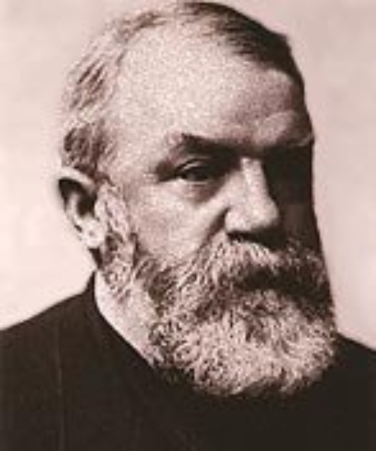
Who Was Dwight L. Moody?
Active in the 1859 prayer revival in Chicago, D.L. Moody helped establish Chicago’s YMCA and became its first full-time employee. Moody was an American evangelist and publisher who founded the Moody Church, Northfield Schools in Massachusetts, the Moody Bible Institute, and Moody Press. In 1861, he became a city missionary for the Y and rose to its presidency from 1866–1869. He took part in establishing the first YMCA building in America when he supervised the creation of Farwell Hall in 1867.

Who Was John Mott?
From 1915–1928, John Mott was the general secretary of the International Committee of the YMCA, and from 1926–1937, he was president of the YMCA’s World Committee. During WWI, when the Y offered its services to President Wilson, Mott became general secretary of the National War Council. Mott believed “the young people’s movements of our day, like our own…YMCA, need nothing so much as some mighty objective to call out the best energies of mind and heart. We find precisely such an objective in the sublime enterprise of filling the earth with a knowledge of the Lord as the waters cover the deep.” Mott was awarded the Nobel Peace Prize in 1946, and nine years later he passed away at his home in Orlando.
Leading Through The Great Depression & WWII
The Great Depression brought dramatic drops in Y income, some as high as 50 percent. Several associations had taken up direct relief of the poor beginning in 1928, as employment mounted before the stock market crash of 1929. When direct relief was taken over by the federal government in 1933, it released YMCAs and other nonprofits from their welfare tasks.
Forced to re-evaluate themselves by hard times and by pressure from militant student YMCAs, community YMCAs became aware of social problems as never before and accelerated their partnerships with other social welfare agencies. Programs and mission were reviewed as well. Some results were joint community projects, a renewed emphasis on group work, and more work through organized classes and lectures. YMCAs were forced to prove to their communities that both character-building agencies and welfare agencies were needed, especially in times of stress.
Between 1929 and 1933, Bible class enrollment fell by 60 percent and residence use was down, but exercise and educational classes were both up, along with vocational training and camping.
A typical Y program of the day was the Leisure Time League in Minneapolis. It drew thousands to that YMCA in 1932 to “unite unemployed young men who desire to maintain their physical and mental vigor and wish to train themselves for greater usefulness and service to themselves and the community,” reported the association. The program offered a wide range of free services such as medical assistance, physical programs, school classes on a dozen subjects, and recreation. As conditions improved even slightly, they went back to work. A few were left behind—in most cases, those considered unemployable. The YMCA offered them vocational training.
The idea spread widely and YMCAs discovered they could survive handily if they served a large number of people and had low building payments. The Chicago Y was able to organize a new South Shore branch in the depths of the Depression.
Wartime challenges
During World War II, the National Council of YMCAs (now the YMCA of the USA) joined with YMCAs around the world to assist prisoners of war in 36 nations. It also helped form the United Service Organization (USO), which ran drop-in centers for service people and sent performers abroad to entertain the troops. YMCAs worked with displaced persons and refugees as well and sent both workers and money abroad after the war to help rebuild damaged YMCA buildings.
After more than two decades of study and trial YMCA youth secretaries in 1944 agreed to put a national seal of approval on what was already widespread in the movement to focus their energies on four programs that involved work in small groups. They became known as the “four fronts” or “four platforms” of Youth Work: a father-son program called Y-Indian Guides, and three boy’s clubs—Gra-Y for those in grade school, Junior Hi-Y, and Hi-Y. (There would eventually be all-female and coed models as well.)
Times of Change for YMCA's
At the close of the war, YMCAs had changed. Sixty-two percent were admitting women, and other barriers began to fall one after the other, with families the new emphasis, and all races and religions included at all levels of the organization. The rapidly expanding suburbs drew the YMCAs with them, sometimes abandoning the old residences and downtown buildings that no longer were efficient or necessary.
In 1958, the U.S. and Canadian YMCAs launched Buildings for Brotherhood in which the two nations raised $55 million which was matched by $6 million overseas. The result was 98 Y buildings renovated, improved or built new in 32 countries.
In what could be called the Great Disillusion of 1965-1975, the nation was rocked by turmoil that included the Vietnam War, the forced resignation of a U.S. president, the outbreak of widespread drug abuse among the middle class, assassination of major political leaders, and a loss of confidence in institutions.
The YMCAs, in response, were challenged by National General Secretary James Bunting to change their ways. He said the choice was “either to keep learning or to become 20th-century Pharisees clinging to forms and theories that were once valid expressions of the best that was known, but that today are outdated and irrelevant.”
With national YMCA support and federal aid, new outreach efforts were taken up by community YMCAs in 150 cities. The Ys poured their own money and talent into outreach as well. Outreach programs were not new to the organization, but the size and scope involved were new.
The four-fronts youth programs withered for lack of attention, dying out entirely in many major centers, but holding fast in YMCA camping and in parts of the Midwest and much of the South. When federal aid dried up, money troubles began to reappear, as Ys struggled to keep faith with those they were helping.
An even more insidious problem was in the mix. Long schooled in conciliation, Y people found themselves being confronted aggressively both at home and abroad. It was particularly hard to deal with and discouraging. Beginning in 1970 the fraternal secretaries serving YMCAs overseas were being called home. Some buildings in U.S. cities were shuttered and residences closed for lack of clientele and insufficient funds for proper maintenance. Y leaders were urged to become more businesslike in both their appearance and their operations, a topic raised by Y boards since the 1920s.
Trends for the Future
After 1975, the old physical programming featured by YMCAs for a century began to perk up as interest in healthy lifestyles increased nationwide. By 1980, pressure for up-to-date buildings and equipment brought on a boom in construction that lasted through the decade.
Child care for working parents, an extension of what YMCAs had done informally for years, came with a rush in 1983 and quickly joined health and fitness, camping and residences as a major source of YMCA income.
Character Development and Asset-Based Approach
During the 1980s and ‘90s, the ideas of “values clarification” were slowly replaced by ideas of “character.” The moral upbringing of children had been considered the sole domain of the family, and enabling the child to discover his or her own ethical system was the goal. But by the mid to late ‘80s, this was seen as contributing to a morally bankrupt society, in which there is no notion of virtue (or of vice), just different points of view. The ideas of character development and civic virtues became central, with Bennet’s The Book of Virtues hitting the best-seller lists and organizations such as Character Counts! being born. “Preach what you practice” became as much a part of the ideal of youth development as “practice what you preach,” and “it takes a village” replaced “it’s the family’s job to develop morals.”
The YMCA movement had been involved in character development from the beginning, but in an implicit and practical focus rather than an explicit one. (George Williams stated this perfectly in his response to how he would respond to a young man who said that he had lost his belief in Jesus, by saying that his first act would be to see that the young man had dinner.) The YMCA movement studied the issue and emerged with four “core values”—caring, honesty, respect and responsibility—and promptly began to incorporate these in all programming in an explicit and conscious way.
During the ‘90s, a tremendous change occurred in the field of youth development. Previously, the focus had been on the “deficit model,” in other words, what went wrong with the youth who got into trouble, and how could they be corrected. But the same way that prevention and development of health, rather than just the cure of disease pervaded the medical world, youth workers and academics started to look at what contributes to healthy development and prevents problems—an “assets model.” YMCA of the USA collaborated with Search Institute on studying this issue in depth and coming up with practical results.
The research showed 30 (later increased to 40) developmental assets that positively correlated with pro-social and healthy behaviors in youth, and negatively correlated with anti-social and unhealthy behaviors. The more assets a youth has, the more likely he or she is to behave well, the less likely to engage in risky behaviors. This not only provided a “road map” for YMCAs to follow in creating healthy kids, families and communities, but also was an inherent proof of the effectiveness of youth programs.
It also showed a wider focus than had been thought possible. It doesn’t matter if a program consists of sports, music, a teen center, mentoring or aerobics, or if it’s aimed at reducing teen pregnancy, smoking or crime. If it provides one or more of the developmental assets, it will reduce the overall risk of any kind of negative behavior, and raise the likelihood of positive behavior.
YMCA's ability to adapt to the changing worldwide events, and meet the needs of their communities has allowed the mission to evolve and endure the test of time.
